|
SHARMA
EL-SHEIKH COP OUT 27 2022
Please
use our A-Z INDEX
to navigate this site, or HOME
AGRICULTURE | BANKS | HOUSING | GROUP20 | INDUSTRY | MONEY | POLITICS | RENEWABLES | TRANSPORT
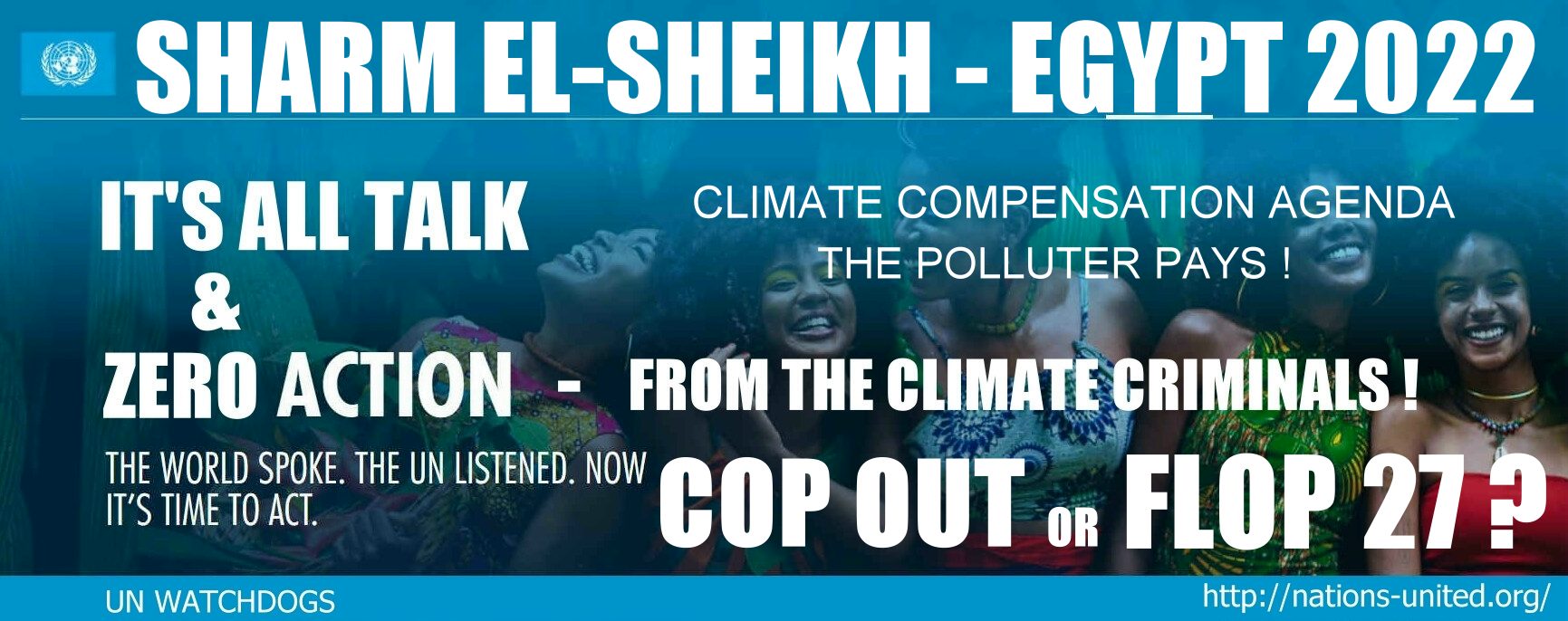
SO WHAT ARE THE BIG OBJECTIVES AT THIS TIME?
1. Mitigation: how are countries reducing their emissions?
Climate Change Mitigation refers to efforts to reduce or prevent the emission of greenhouse gases. Mitigation can mean using new technologies and renewable energy sources, making older equipment more energy efficient, or changing management practices or consumer behaviour.
Countries are expected to show how they are planning to implement the Glasgow pact call, to review their climate plans and create a work programme related to mitigation.
This means presenting more ambitious 2030 emissions targets, since UN Climate Change has said that current plans are still not enough to avoid catastrophic warming.
2. Adaptation: how are countries going to adapt and help others do the same?
Climate change is here. Beyond doing everything we can to cut emissions and slow the pace of global warming, countries must also adapt to climate consequences so that they can protect their citizens.
The fallout varies depending on location. It might mean the risk of more fires or floods, droughts, hotter or colder days or sea-level rise.
At COP26, delegates adopted a work programme on the global goal of adaptation established in the Paris Agreement.
The plan was put in place to equip communities and countries with the knowledge and tools to ensure that adaptation actions they take, are indeed moving the world towards a more climate-resilient future.
The COP27 Presidency expects nations to capture and assess their progress toward enhancing resilience and helping the most vulnerable communities. This means countries making more detailed and ambitious commitments in the adaptation components of their national climate plans.
Last year, developed countries agreed to at least double finance for adaptation, and many stakeholders are calling for even greater levels of adaptation funding to match the amounts that are now being spent on mitigation, as established in the Paris Agreement. This will definitely be a big conversation topic at Sharm el-Sheikh.
UNFCCC is clear that to respond to the present and future climate risks it is necessary to significantly increase the scale of adaptation finance, from all sources – public and private sources. All players must come on board – governments, financial institutions, and the private sector.
3. Climate Finance: the elephant that never leaves the negotiation room
Climate finance will be a top theme once again at COP27, many finance-related discussions are already on the agenda, with developing countries making a loud call for developed countries to reassure sufficient and adequate financial support, particularly to the most vulnerable.
We will probably hear a lot about the yearly $100 billion promise by developed nations that isn’t being delivered. In 2009 in Copenhagen, rich countries committed to this financing, but official reports still show that this target is being missed. Experts expect COP27 to actually make this pledge a reality finally, in 2023.
The Egyptian Presidency aims to follow up on this and other commitments and pledges made in previous COPs.
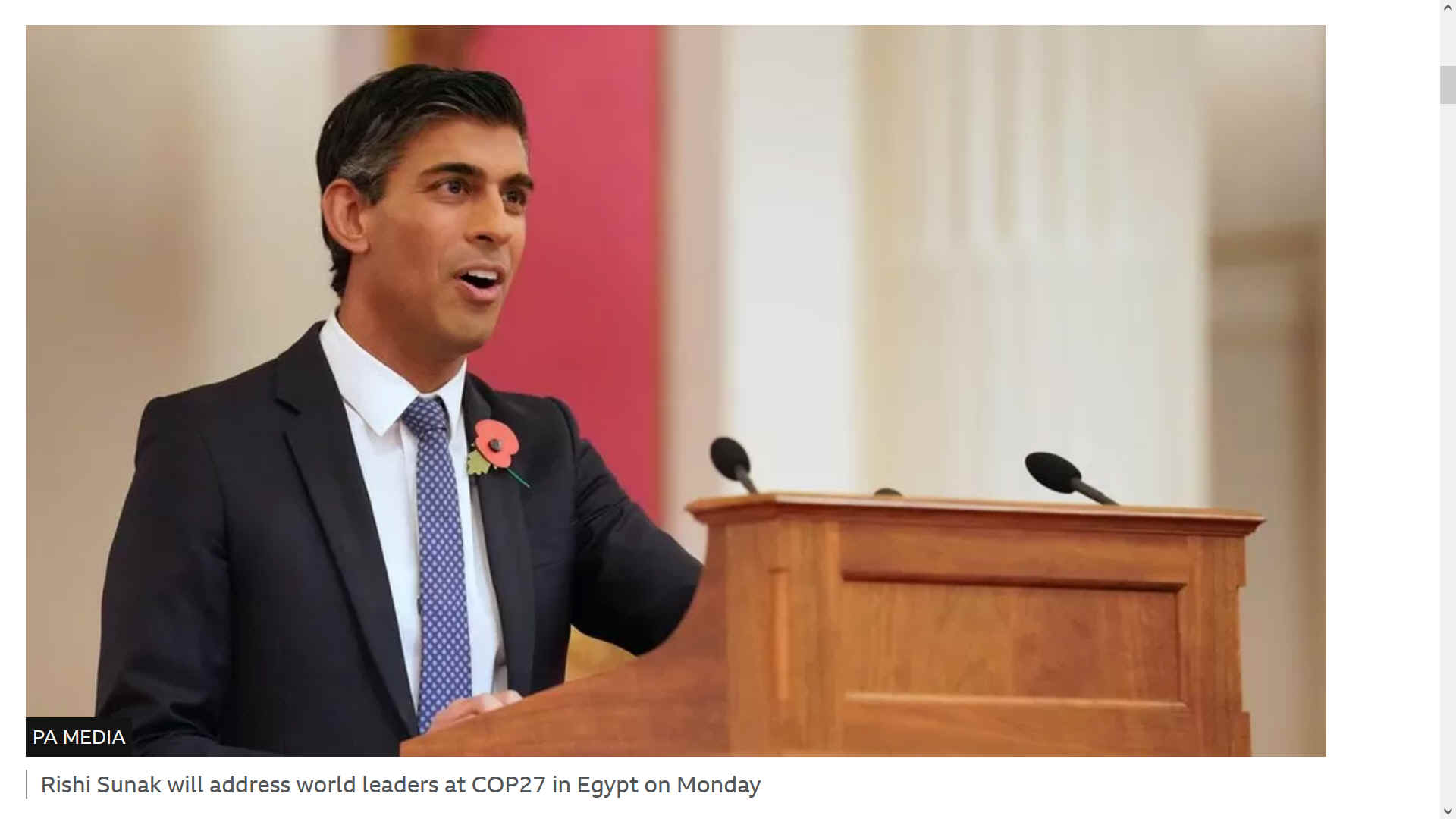
COP
FLOP 27 2022
- The Conference of the parties for this year included
compensation for those affected by the actions of others. This
was a major sticking point at the start of the event. Rishi
Sunak and Alok Sharma went to
Egypt to help with the
negotiations. But is what they are saying in public true? We
have our fingers crossed. Many nations will be saying the
right things, hoping that other nations will bear the brunt of
the cost of the zero emission transformation, while they carry
on as usual - and simply makes excuses as to the hurdles to
bound.
What’s this ‘Loss and Damage’ issue we hear so much about?
Climate change, through extreme weather events such as tropical
cyclones, desertification and
rising sea
levels, causes costly damage to countries.
Because the intensification of these otherwise “natural disasters” is being caused by the rise in greenhouse gas emissions, mostly from rich industrialised countries, developing countries - often the most affected - argue that they should receive compensation.
Denmark made headlines during the latest high-level week of the UN General Assembly after being the first country to announce that it will give $13 million to developing countries that have suffered damage due to climate change.
The issue of these payments, known as “loss and damage” will be more than likely a big topic of discussion at COP27, even when it hasn’t been put officially on the agenda yet.
The group of the 77 and China (which essentially includes all developing nations) has requested to add it to the agenda, which will require consensus across all countries on the first day of the talks.
To date, there have been discussions around establishing a Loss and Damage fund, but nothing concrete. Experts such as the UN Special Rapporteur on Human Rights and Climate, Ian Fry, are hoping to build further momentum and “get it done”.
“There are major developed countries that are quite concerned about it and looking at this issue from the perspective of what the polluter pays. Now, the countries most affected by climate change and suffering the costs are having to deal with those costs themselves.
“So, it's time the big countries, the major emitters, stood up and said, ‘we've got to do something, we've got to make a contribution to these vulnerable countries’”, he told UN News during a recent interview.
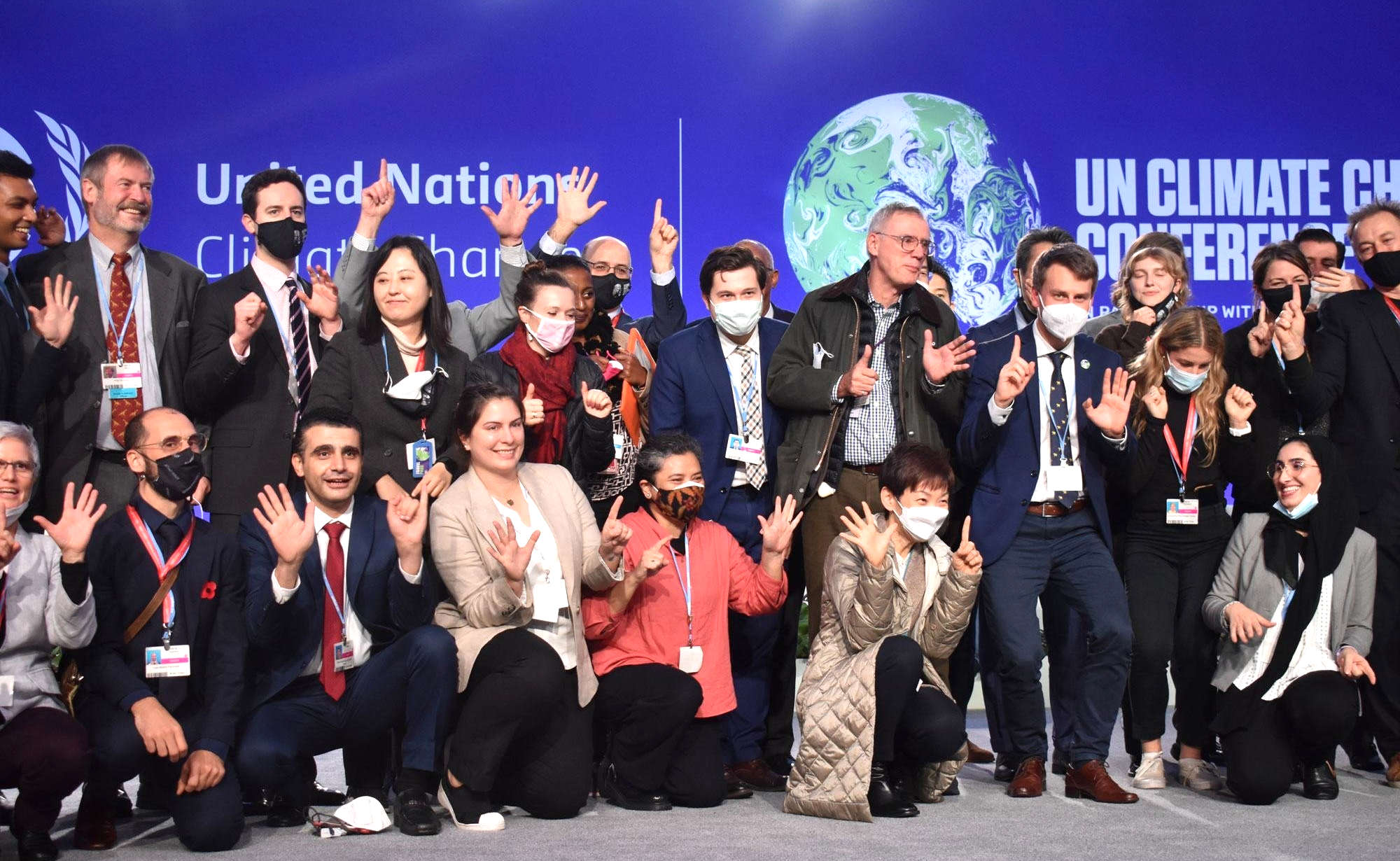
How is the war in Ukraine affecting all this?
According to Ilana Seid, Permanent Representative of Palau to the United Nations, and climate negotiator, this COP is going to be “confusing” given the current sociopolitical landscape and energy crisis.
“The war in Ukraine happened, so there are so many things that so many countries agreed to, and now they can’t do. As a result of the war, the landscape has shifted”, she explained.
Indeed, Russia’s invasion of Ukraine has caused a global inflation, energy, food and supply chain crisis. Countries such as Germany have had to scale back on their climate goals in the short term, while the historical China-US Climate Working Group announced in Glasgow has now been suspended.
COP27 will most likely see a setback in the pledges and commitments some countries did last year.
However, Special Rapporteur Ian Fry considers that the war could also be a “wake-up call” for nations to become self-sufficient in energy.
He argues that the cheapest way to do this is through renewables, which are key to reducing emissions.
“We're seeing Portugal moving towards 100 per cent renewable, we know Denmark is also doing that, and I think that will drive other countries to see the need to be renewable and energy self-sufficient”, he told UN News.

Will civil society participate at COP, or just delegates?
The main event will be held at the Sharm el-Sheikh International Convention Centre, from 6-18 November.
So far, there are over 30,000 people registered to attend representing governments, businesses, NGOs, and civil society groups.
The 197 Parties to the UNFCCC treaty, often get in groups or “blocs”, to negotiate together such as the G77 and China, the Africa Group, the Least Developed Countries, the Umbrella Forum, the Small Island Developing States, and the Independent Alliance of Latin America and the Caribbean.
The negotiations also include observers, which have no formal part in them but make interventions and help maintain transparency. Observers include United Nations agencies, intergovernmental organizations, NGOs, faith-based groups, and the press.
But besides the official negotiations, there will be conference rooms, a pavilion section, and thousands of side events happening, divided over thematic days,
This year’s themes are: Finance, Science, Youth & Future Generations, Decarbonization, Adaptation & Agriculture, Gender, Water, Ace & Civil Society, Energy, Biodiversity and Solutions (the newest theme this COP).
As usual, the conference will happen in two zones – The Blue Zone and the Green Zone, which this year are located right across from each other.
The Blue Zone is a UN-managed space where negotiations are hosted and, to enter, all attendees must be credited by the UNFCCC Secretariat.
This year there will be 156 pavilions inside the Blue Zone, double the amount at Glasgow. Many UN agencies, countries and regions will be represented, and there will also be for the first time a Youth and an Agrifood pavilion.
The Green Zone is managed by the Egyptian Government and open to the registered public. It will include events, exhibitions, workshops and talks to promote dialogue, awareness, education, and commitment on climate action.
According to the Presidency, the Green Zone will be the platform where the business community, youth, civil and indigenous societies, academia, artists and fashion communities from all over the world can express themselves and their voices can be heard.
This year, the Green Zone will also include a special “protest zone”, and a huge outdoor lounge and terrace space.
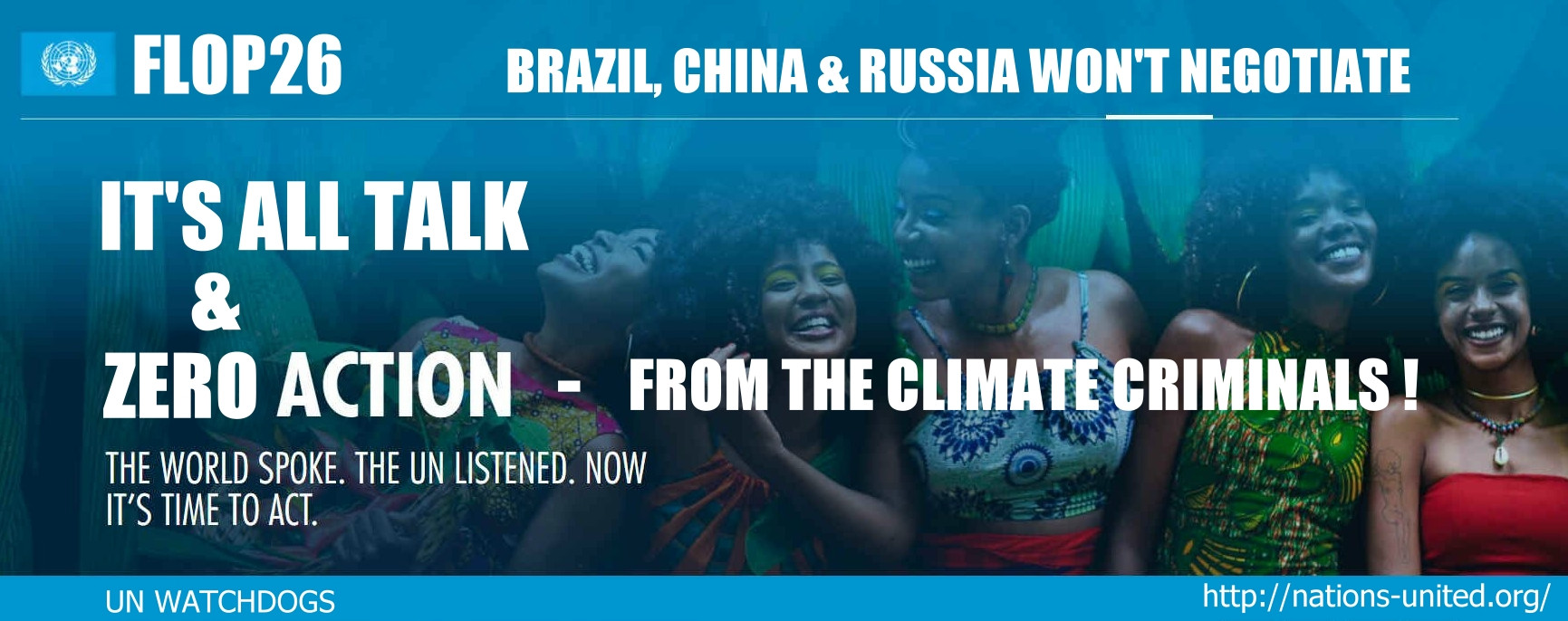
FLOP
26
-
The disclosure of documents from many countries churning out
beef, cutting down rain forests, scamming with cryptocurrencies
and either burning or exporting, coal, oil or gas, tells it
like it is. The big players are fighting shy of committing to
binding targets aimed at reducing greenhouse gases - they are
in love with profiteering, bordering on racketeering. China is
exporting cheap goods made from burning coal, while enjoying a
building boom and vast computer networks chewing through coal
generated electricity for bitcoin mining. Alok Sharma and the
remaining responsible counties don't have a prayer in the face
of such refusal to change over to zero carbon tech. One way of
dealing with the Climate
Nazis is not to import of export any goods to or from
them. This would entail the good-guys improving home grown
agriculture and ties only with countries with zero emission
pledges. The same applies to goods such as computers and
electric cars, where almost all lithium batteries are Made in
China. It's simple. Don't buy anything that comes from
Argentina, Australia, Brazil, China or Russia. Insist on
domestically produced goods. Insist that your country has such
policies. We are on a war footing at Defcon
1.
THE
CLIMATE CRIMINALS
The US,
Brazil,
India and
China opposed a more ambitious plan on
greenhouse gas reductions. This shouldn’t surprise us. These are nations run by people who take pride in ignoring what everyone else thinks. China’s decision to build even more
coal-fired power stations tells
us they’re not interested in being reasonable. Although, they are extremely active in rolling out net-zero technologies.
Hence, perhaps we should not be too hasty to judge. Because
India, is also planning expansion with coal. Once again, we
can but hope that the lower cost of renewables, finally hits
them economically. When all other countries are producing
cheaper, sustainable, energy.
We
are in favour of carbon markets. The idea that one party
should pay compensation to another for damaging the planet is
logical - as an interim measure, where so many countries are
falling way short of producing change in the form of home
grown policies. The UK has statute, but continues to build new
brick houses without solar panels and EV charging, unabated,
with the backing of the Planning Inspectorate. There are many
ways of dealing with
climate change and if
climate criminals will not do the right thing voluntarily, we
must apply sanctions, fines and whatever, until renewable
technology is given a fair shake. Financialising
climate change
is a good idea, since it was banks lending what the planet
could not afford, and governments borrowing to get themselves
elected - regardless of the global warming consequences - that
got us into this mess. However, non productive workers, like
bankers must not be allowed to make money from such schemes,
we wouldn’t trust them to achieve anything positive without
complete transparency and monitoring.
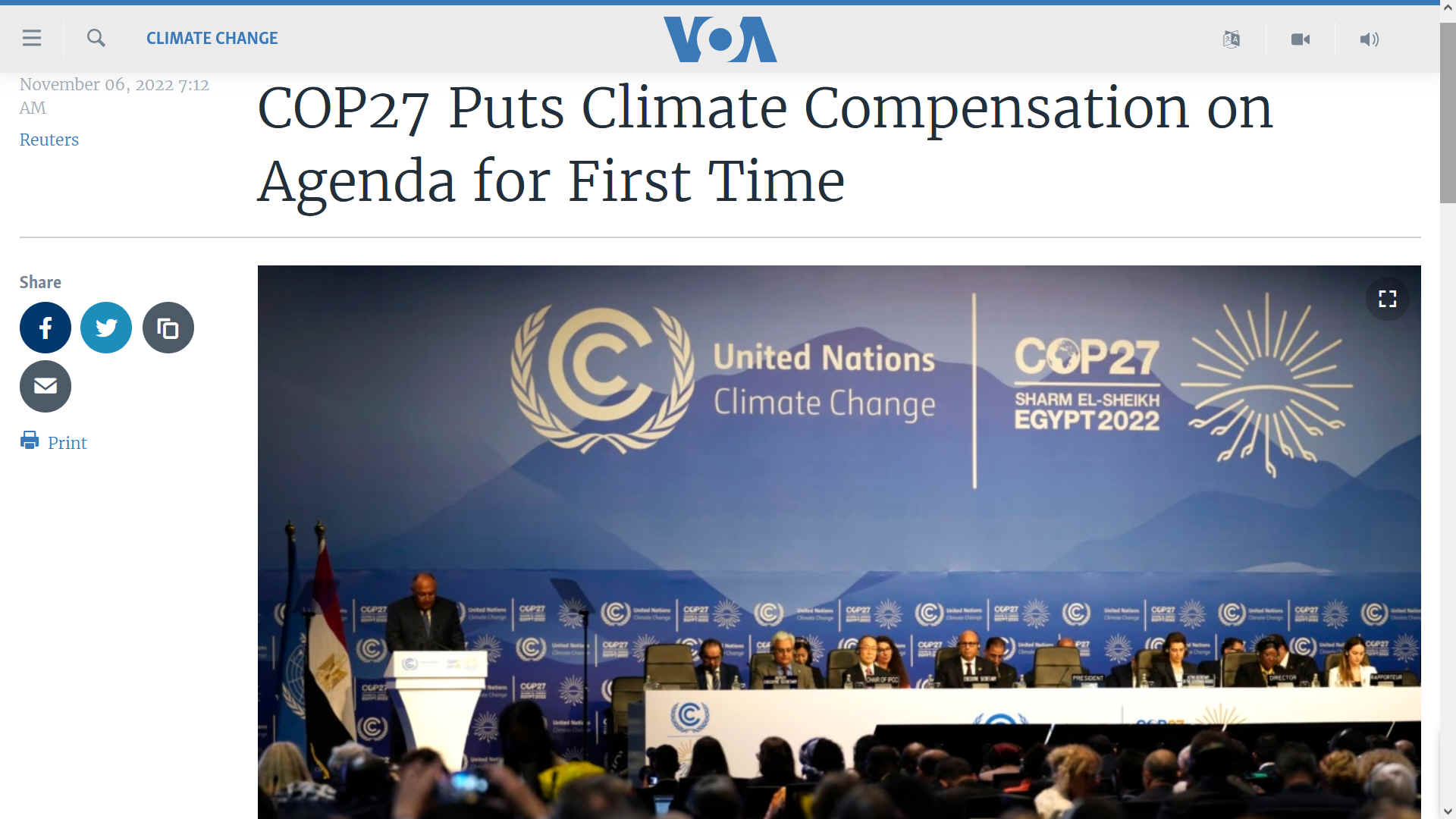
CLIMATE
COMPENSATION AGENDA
REUTERS 6 NOVEMBER 2022 - PRESIDENT SAMEH SHOUKRY - SHARM EL-SHEIKH, EGYPT
Delegates at the U.N.'s COP27 climate summit in Egypt agreed to discuss whether rich nations should compensate poor countries most vulnerable to climate change for their suffering.
[Such as sinking
islands, and beaches swamped with sargassum.]
"This creates for the first time an institutionally stable space on the formal agenda of COP and the Paris Agreement to discuss the pressing issue of funding arrangements needed to deal with existing gaps, responding to loss and damage," COP27 president Sameh Shoukry told the opening plenary.
The item was adopted to the agenda in Sharm el-Sheikh, Egypt, on Sunday, as world leaders arrived for the negotiations scheduled to run through Nov. 18.
Much of the tension at COP27 is expected to relate to loss and damage - funds provided by wealthy nations to vulnerable lower-income countries that bear little responsibility for climate-warming emissions.
At COP26 last year in Glasgow, high-income nations blocked a proposal for a loss and damage financing body, instead supporting a new three-year dialogue for funding discussions.
The loss and damage discussions now on the agenda at COP27 will not involve liability or binding compensation, but they are intended to lead to a conclusive decision "no later than 2024," Shoukry said.
"The inclusion of this agenda reflects a sense of solidarity for the victims of climate disasters," he added.
Making policy and setting targets is
relatively easy, though the UK is the only country at present
with legally binding targets as statute. The difficult bit is delivering on them
(enforcing) and it’s especially hard for a devolved government with only limited powers that it can use particularly when it comes to fiscal and other financial levers.
With their hands in the pockets of the oil giants, income
wise; out of economic necessity we might add. And that is the
hard bit, working out a way to make it happen to ease the
transition. To allow oil producers to switch to renewables
gently. So as not to upset the markets, more than is
absolutely necessary. Indeed, investors, may begin to demand
change. To add to the pressure on fossil fuel companies.
Fortunately,
producers such as ExxonMobil, are now investing in hydrogen
projects in the USA and UK. Shell is also working on hydrogen
projects in Europe. We imagine BP will be doing something
similar.
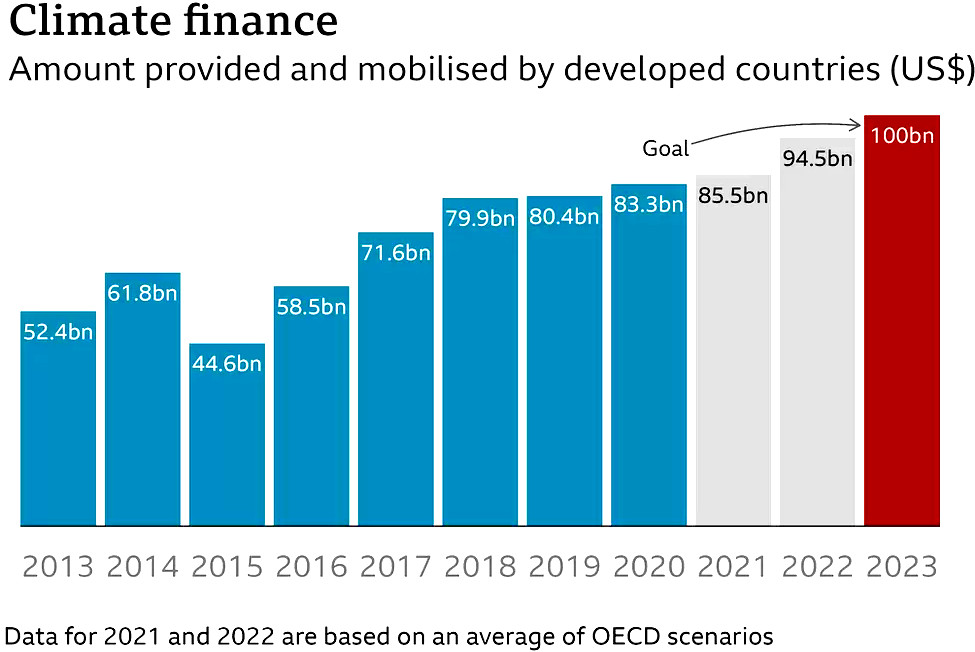
BLUE HYDROGEN
ExxonMobil plans to build a world-scale “blue” hydrogen plant at its Baytown, Texas, refining and petrochemical complex. When combined with
Carbon Capture and Storage (CCS), hydrogen will support the company's commitment to reducing emissions across its operations.
The new plant could generate up to 1 billion cubic feet of hydrogen per day, delivering low-carbon fuel to the Baytown
olefins plant and other Houston-area facilities.
Replacing natural gas with hydrogen at the Baytown olefins plant could reduce the integrated complex’s CO2 emissions by up to 30% compared to current operations. The International Energy Agency sees hydrogen and hydrogen-based fuels meeting 10% of global energy needs as part of its “Net Zero by 2050” scenario.
ExxonMobil signed a memorandum of understanding with gas distribution company SGN, and Green Investment Group, to look at ways to lower industrial CO2 emissions in the Southampton, UK, area using low-carbon hydrogen. This includes their Fawley complex.
If the technical and business feasibility of the initiative is confirmed, a facility to capture industrial CO2 emissions could be constructed near the Southampton Water industrial area. The captured CO2 would then be shipped offshore for safe and permanent storage.
Blue hydrogen is a term often used to refer to hydrogen that has been manufactured from natural gas with carbon capture and storage technology capturing the associated CO2 emissions from the process.
If the technical and business feasibility of the initiative is confirmed, a facility to capture industrial CO2 emissions could be constructed near the Southampton
Water industrial cluster in southern England. The captured CO2 would then be shipped offshore for safe and permanent storage.
The production of hydrogen could, in such a scenario, begin as early as 2030. Initial projections from the study identify that carbon capture and storage facilities associated with the hydrogen production could capture nearly 2 million metric tonnes of CO2 per year, while potentially producing more than 4 TWh of hydrogen annually.
The potential of this initiative could increase the use of hydrogen, which may help decarbonize the area’s industrial sector. Hydrogen would be delivered to customers to help reduce emissions from domestic heating, industrial processes and transportation.
The CO2 could be used to make Methanol for ships and trucks, using
fuel
cells. A phased transition, needs a definitive plan to
succeed in time to meet the Paris Agreement objectives. The
question is, can any company move that fast, and will the
public and governments support them?
Just before the election it was announced that an Oil and Gas Technology Centre project to test the feasibility of producing
hydrogen offshore on “redundant” oil and gas platforms had not won any further funding from the UK Government, despite a successful initial study.
The UK has only just got rid of one of the biggest embarrassments
of a Prime Minister, in Bullshit Bojo, rapidly followed up by
Liz 44 days Truss. But now the Brits have Rishi Sunak, their
former Chancellor, who has used many dubious ruses to generate
income, such as eliminating warnings to companies about
filings of Accounts and Returns, knowing this would catch many
out, to collect fines by the buckets. Hardly, cricket old
stick!
Given everything going on in Europe on hydrogen production, including a Danish project to construct artificial offshore islands to tie in power from offshore wind and use some of that
energy to produce
hydrogen, it just strikes
us as naive and obstructive that the UK should decide not to provide further support.
Yet still blah, blah, blah, as if they were proactive. When in
fact they are business as usual.
The consequences to the slow movers like the UK and Scotland can be economically harmful.
Cummins, the US company renowned for its diesel engines has decided to close its engine factory in Cumbernauld in Scotland, making around 130 people redundant.
Cummins claims the closure is due to market conditions. Companies and others are simply buying less diesel-powered everything and whilst that’s unfortunate for the 130 losing their jobs it’s the right response to climate change.
The idea is that they move to making electric motors and
invest in EV infrastructure.


WIPE
OUT - Competition for water in Australia is so intense
that they are shooting camels. What next? Shoot the kangaroos
and koala bears, and then lets zero in on the indigenous human
population - as things really get serious?
1995 COP
1,
BERLIN, GERMANY
1996 COP
2, GENEVA, SWITZERLAND
1997 COP
3, KYOTO, JAPAN
1998 COP
4, BUENOS AIRES, ARGENTINA
1999 COP
5, BONN, GERMANY
2000:COP
6, THE HAGUE, NETHERLANDS
2001 COP
7, MARRAKECH, MOROCCO
2002 COP
8, NEW DELHI, INDIA
2003 COP
9, MILAN, ITALY
2004 COP
10, BUENOS AIRES, ARGENTINA
2005 COP
11/CMP 1, MONTREAL, CANADA
2006 COP
12/CMP 2, NAIROBI, KENYA
2007 COP
13/CMP 3, BALI, INDONESIA
2008 COP
14/CMP 4, POZNAN, POLAND
2009
COP 15/CMP 5, COPENHAGEN, DENMARK
2010 COP
16/CMP 6, CANCUN, MEXICO
2011 COP
17/CMP 7, DURBAN, SOUTH AFRICA
2012 COP
18/CMP 8, DOHA, QATAR
2013 COP
19/CMP 9, WARSAW, POLAND
2014 COP
20/CMP 10, LIMA, PERU
2015 COP
21/CMP 11, Paris, France
2016 COP
22/CMP 12/CMA 1, Marrakech, Morocco
2017 COP
23/CMP 13/CMA 2, Bonn, Germany
2018 COP
24/CMP 14/CMA 3, Katowice, Poland
2019 COP
25/CMP 15/CMA 4, Santiago, Chile
2020
COP 26/CMP 16/ CMA 5, Glasgow, Scotland
2021
COP 26/Glasgow, Scotland
2022
CP27/ Sharm El-Sheikh, Egypt
UN
CLIMATE ACTION PORTFOLIOS
1.
Finance
2. Energy
Transition
3. Industry
Transition
4. Nature-Based
Solutions
5. Cities
and Local Action
6. Resilience
and Adaptation
7. Mitigation
Strategy
8. Youth
Engagement & Public Mobilization
9. Social
and Political Drivers
DESERTIFICATION
COP HISTORY
|
COP
1:
Rome, Italy, 29 Sept to 10 Oct 1997
|
COP
9: Buenos Aires, Argentina, 21 Sept to 2 Oct
2009
|
|
COP
2: Dakar, Senegal, 30 Nov to 11 Dec 1998
|
COP
10: Changwon, South Korea, 10 to 20 Oct 2011
|
|
COP
3: Recife, Brazil, 15 to 26 Nov 1999
|
COP
11: Windhoek, Namibia, 16 to 27 Sept 2013
|
|
COP
4: Bonn, Germany, 11 to 22 Dec 2000
|
COP
12: Ankara, Turkey, 12 to 23 Oct 2015
|
|
COP
5: Geneva, Switzerland, 1 to 12 Oct 2001
|
COP
13: Ordos City, China, 6 to 16 Sept 2017
|
|
COP
6: Havana, Cuba, 25 August to 5 Sept 2003
|
COP
14: New Delhi, India, 2 to 13 Sept 2019
|
|
COP
7: Nairobi, Kenya, 17 to 28 Oct 2005
|
COP
15: 2020
|
|
COP
8: Madrid, Spain, 3 to 14 Sept 2007
|
COP
16: 2021
|
BIODIVERSITY
COP HISTORY
|
COP
1:
1994 Nassau, Bahamas, Nov & Dec
|
COP
8: 2006 Curitiba, Brazil, 8 Mar
|
|
COP
2: 1995 Jakarta, Indonesia, Nov
|
COP
9: 2008 Bonn, Germany, May
|
|
COP
3: 1996 Buenos Aires, Argentina, Nov
|
COP
10: 2010 Nagoya, Japan, Oct
|
|
COP
4: 1998 Bratislava, Slovakia, May
|
COP
11: 2012 Hyderabad, India
|
|
EXCOP:
1999 Cartagena, Colombia, Feb
|
COP
12: 2014 Pyeongchang, Republic of Korea, Oct
|
|
COP
5: 2000 Nairobi, Kenya, May
|
COP
13: 2016 Cancun, Mexico, 2 to 17 Dec
|
|
COP
6: 2002 The Hague, Netherlands, April
|
COP
14: 2018 Sharm El-Sheikh, Egypt, 17 to 29
Nov
|
|
COP
7: 2004 Kuala Lumpur, Malaysia, Feb
|
COP
15: 2020 Kunming, Yunnan, China
|
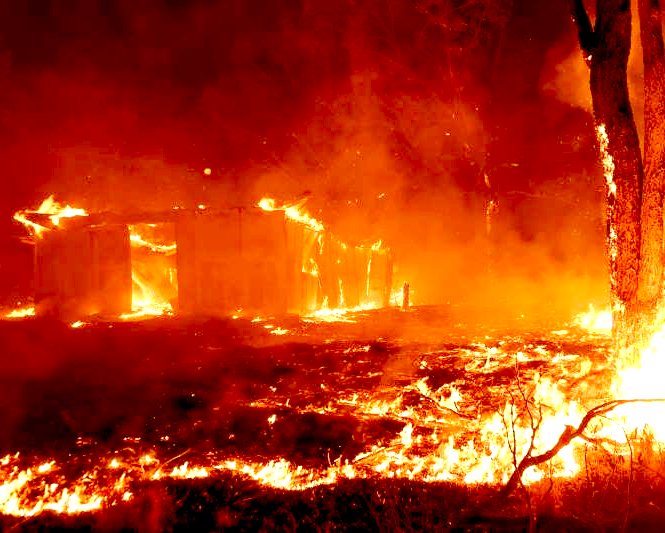
CONTACTS
The
UNFCCC secretariat is located at two different locations.
Main
office
UNFCCC secretariat
UN Campus
Platz der Vereinten Nationen 1
53113 Bonn
Germany
Haus Carstanjen Office
Martin-Luther-King-Strasse 8
53175 Bonn
Germany
Mailing address
UNFCCC secretariat
P.O. Box 260124
D-53153 Bonn
Germany
Phone: (49-228) 815-1000
Fax: (49-228) 815-1999
Web: http://unfccc.int
info@climateactionprogramme.org
http://www.climateactionprogramme.org

LINKS
& REFERENCE
https://corporate.exxonmobil.com/climate-solutions/hydrogen
https://energyfactor.exxonmobil.com/reducing-emissions/fawley-blue-hydrogen-hub/
https://news.un.org/en/story/2022/10/1129947
https://www.voanews.com/a/cop27-puts-climate-compensation-on-agenda-for-first-time/6822373.html
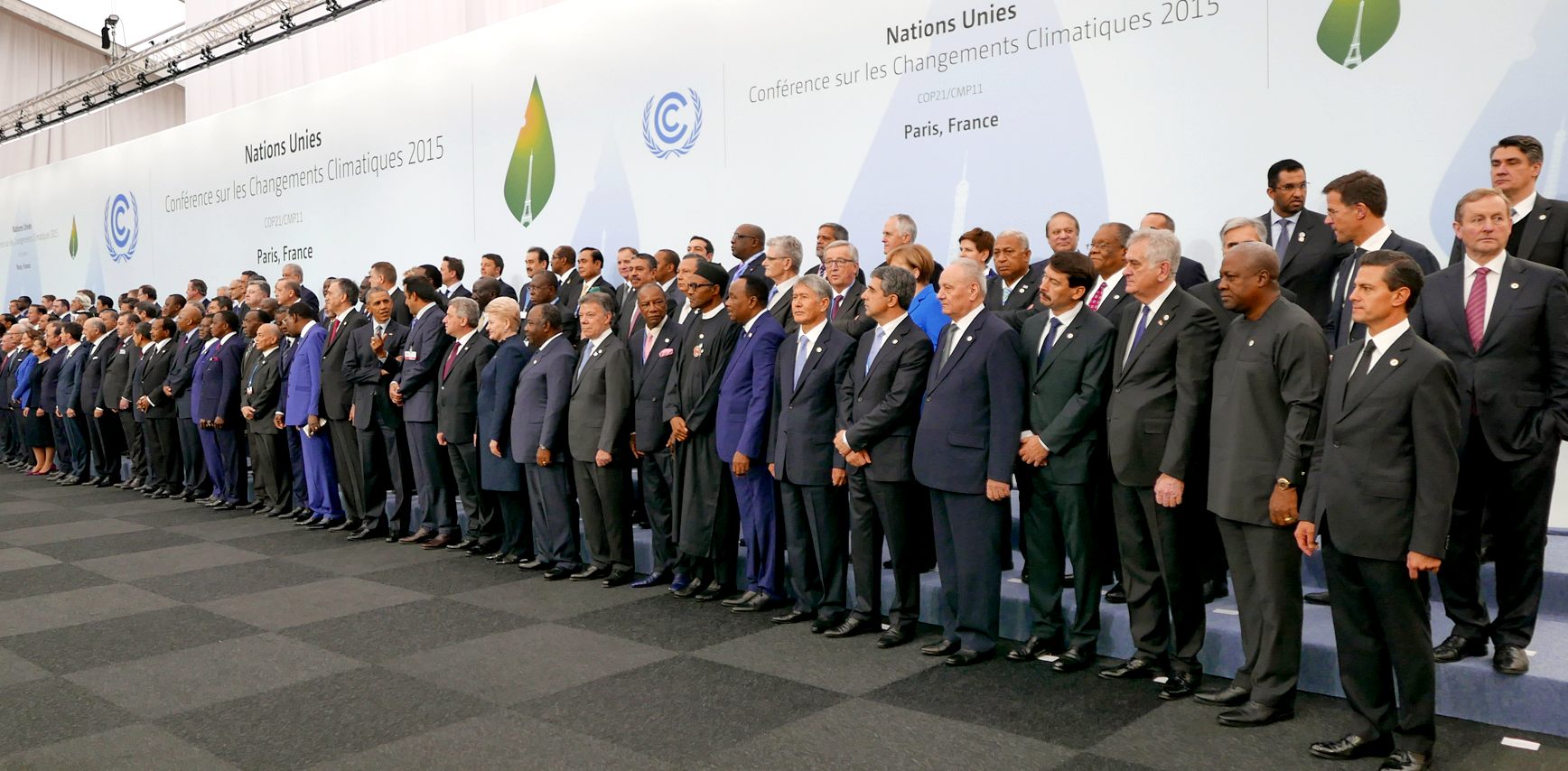
COP
THAT - The United Nations Climate Change Conferences are yearly conferences held in the framework of the United Nations Framework Convention on Climate Change
(UNFCCC). They serve as the formal meeting of the UNFCCC Parties (Conference of the Parties, COP) to assess progress in dealing with climate change, and beginning in the mid-1990s, to negotiate the Kyoto Protocol to establish legally binding obligations for developed countries to reduce their greenhouse gas emissions. From 2005 the Conferences have also served as the "Conference of the Parties Serving as the Meeting of Parties to the
Kyoto
Protocol" (CMP); also parties to the Convention that are not parties to the Protocol can participate in Protocol-related meetings as observers. From 2011 the meetings have also been used to negotiate the
Paris Agreement as part of the Durban platform activities until its conclusion in 2015, which created a general path towards climate action. The first UN Climate Change Conference was held in 1995 in Berlin.
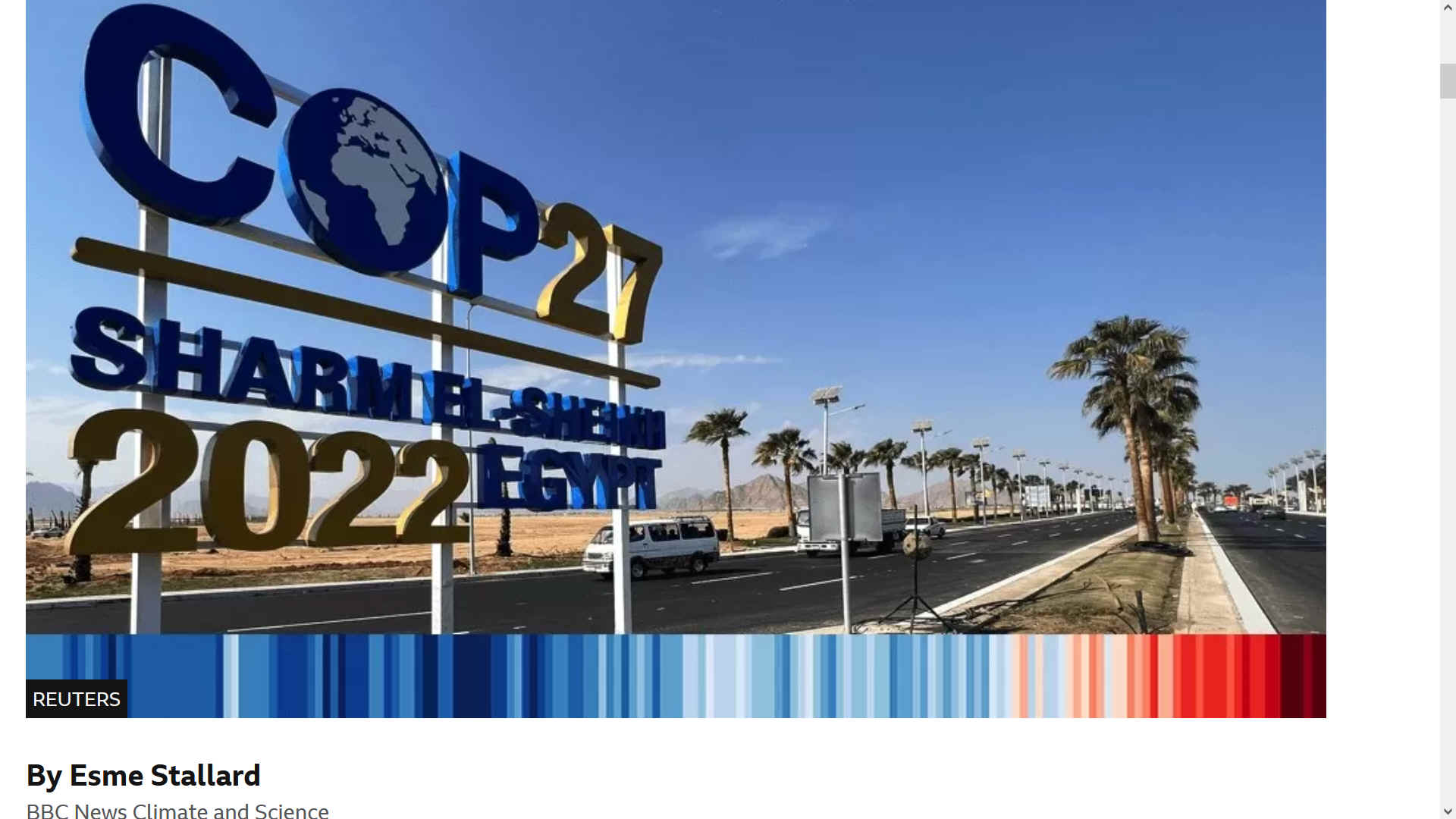
This
website is provided on a free basis as a public information
service. copyright © Cleaner
Oceans Foundation Ltd (COFL) (Company No: 4674774)
2022.
Solar
Studios, BN271RF, United Kingdom.
COFL
is a charity without share capital..
|












